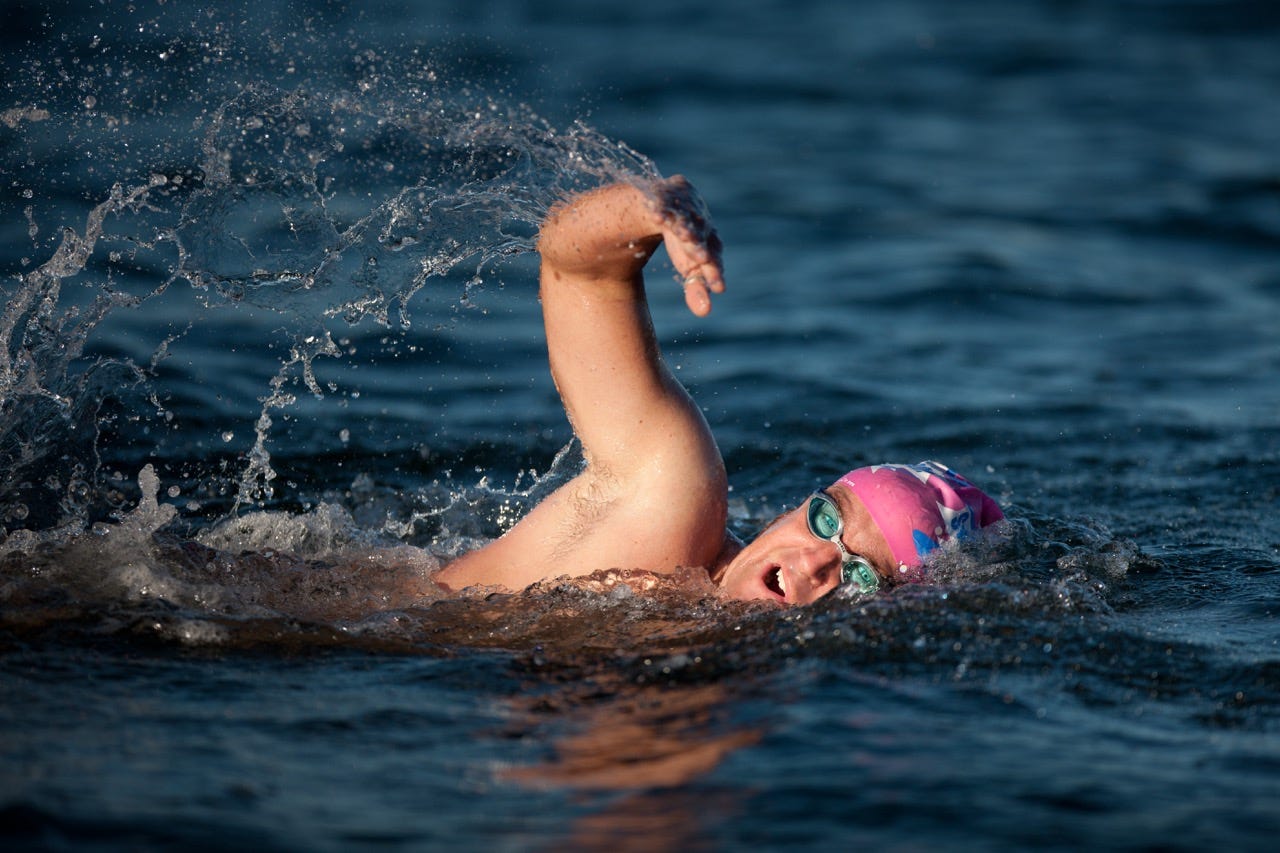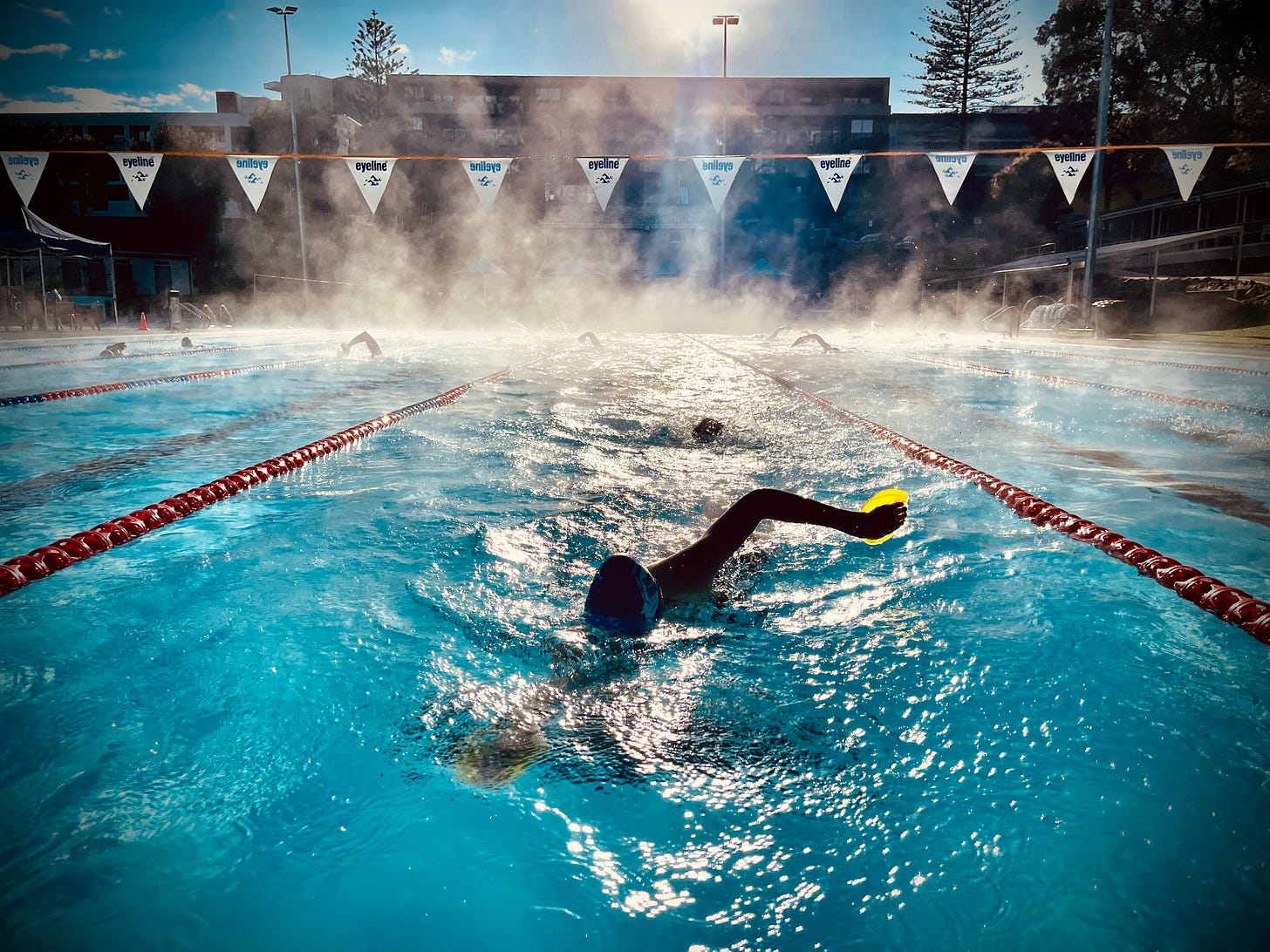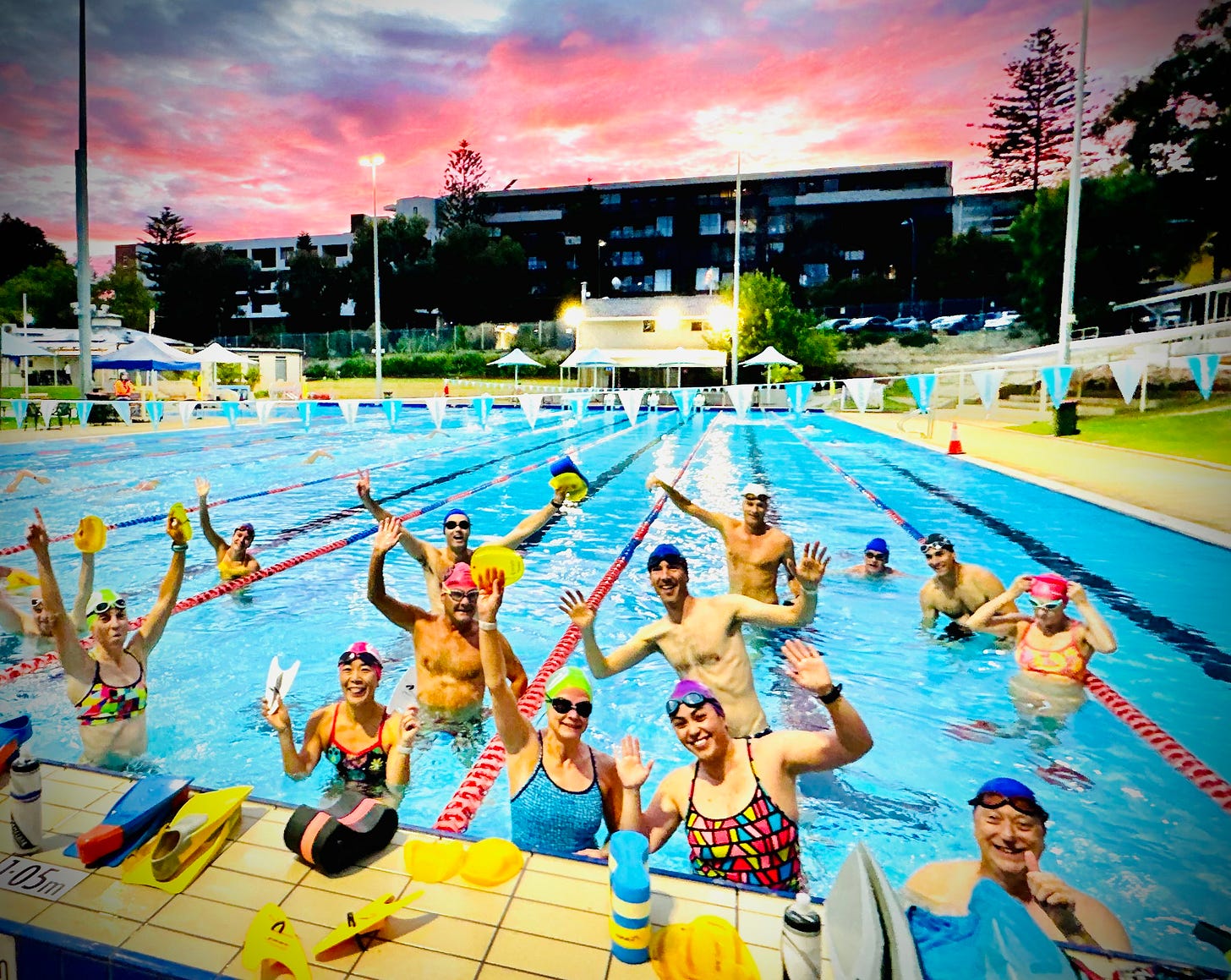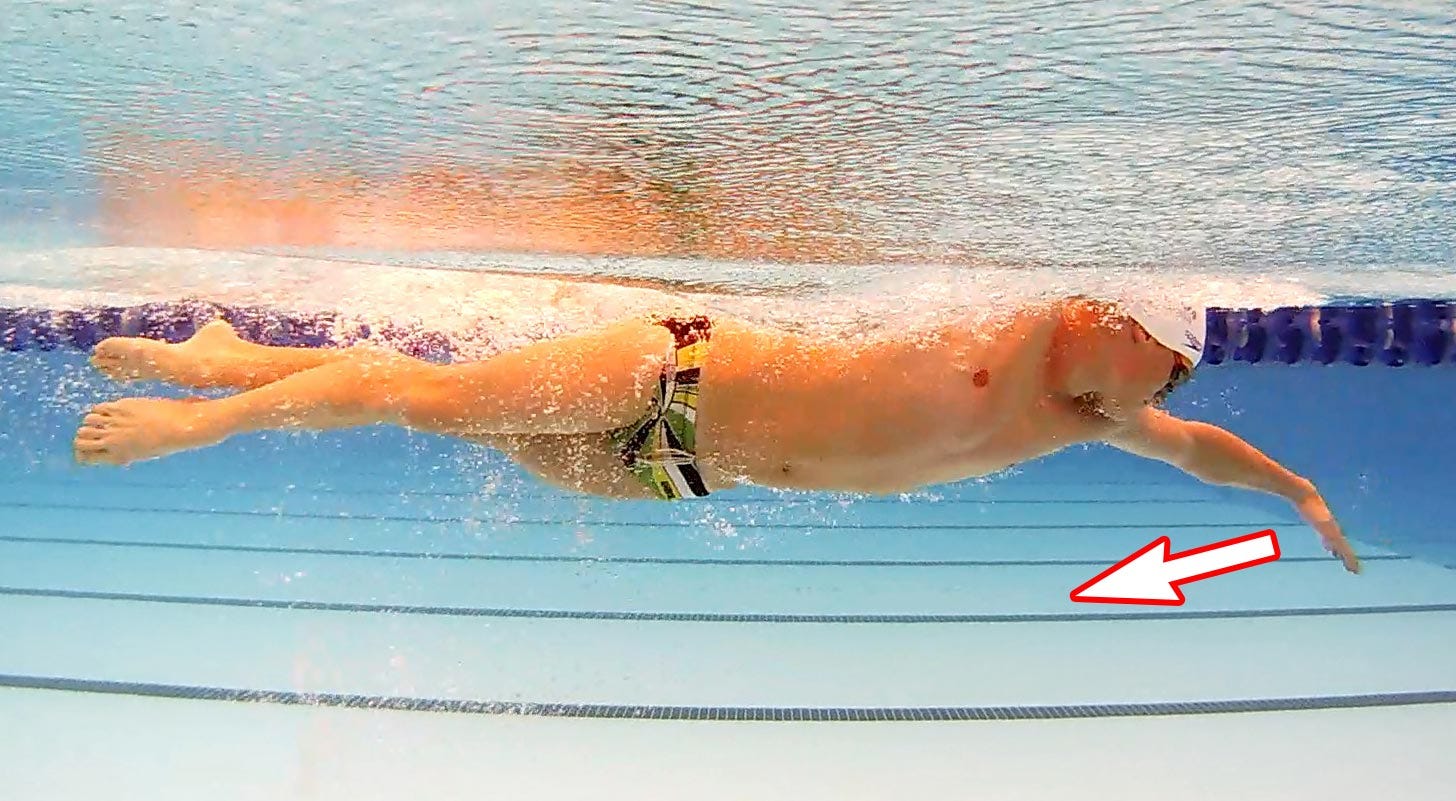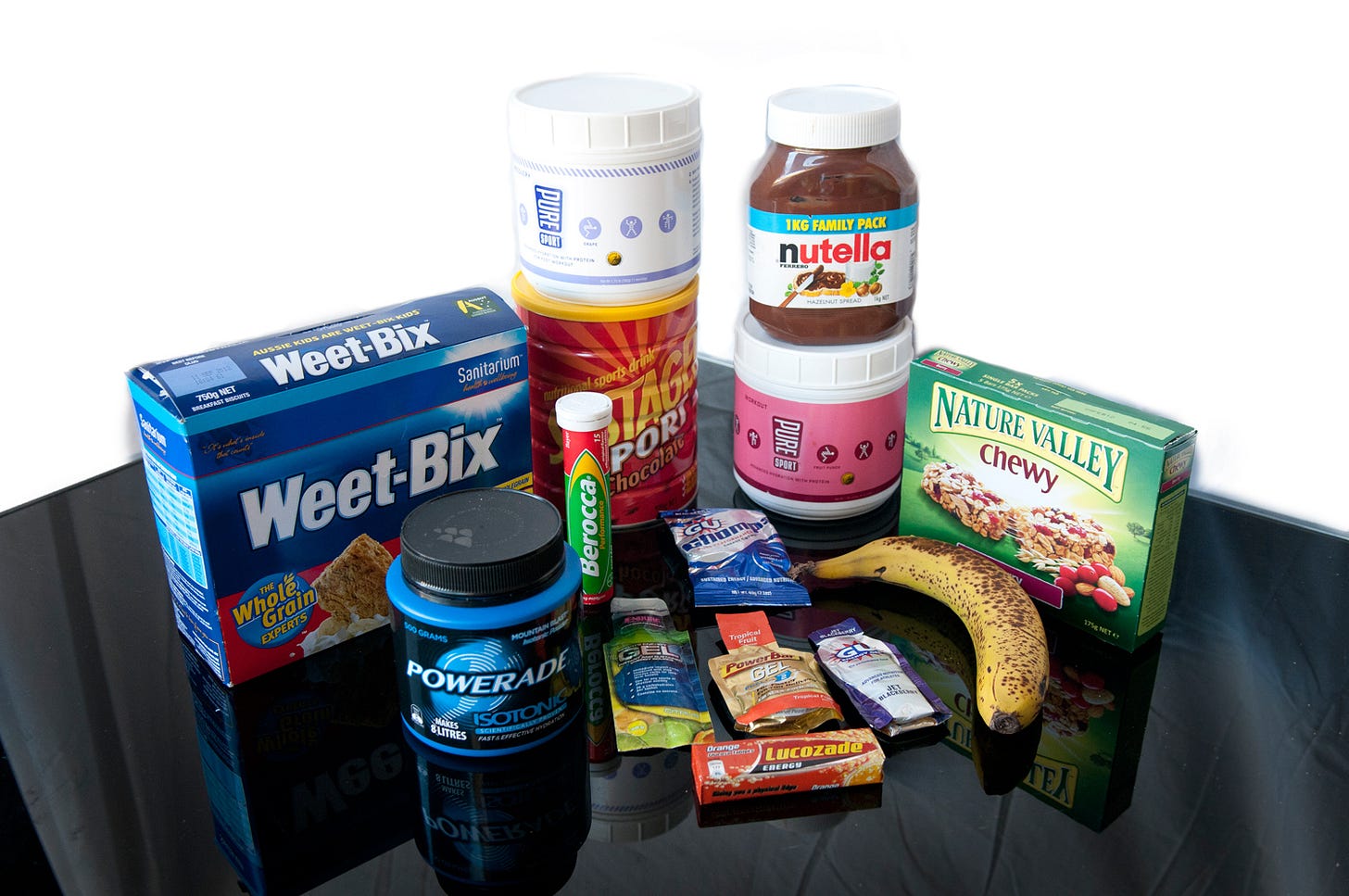Ready for Your First 10km Swim? Here’s Your Proven Plan!
Ever wanted to give a 10km a try? Probably the equivalent of a marathon run for context!
Hey Swimmers,
The 10km marathon swim— an Olympic event since 2008—is a milestone many open water swimmers dream of. It’s long, yes, but also totally achievable with the right training, mindset, and structure.
If the English Channel feels too ambitious (for now), 10km is the perfect bridge between shorter events and ultra-distance swimming. But it demands more than just turning up and hoping for the best. To not only finish but enjoy your race, you’ll need a smart, progressive build-up—and this is exactly how to do it.
1. Start With Realistic Timeframes
The biggest mistake first-timers make is underestimating how long it takes to build the stamina and efficiency required for 10km.
🗓 If you currently swim 2–3 times per week and average 3–4km per session, allow 16–20 weeks to prepare.
🗓 If you’re a competitive swimmer logging 4+ sessions per week, 12 weeks may be enough.
Increase your volume gradually, by no more than 10% per week. Consistency trumps urgency.
2. Train Smarter in Five Key Phases
Your build-up should follow a clear progression. Here’s what that looks like:
🟢 Phase 1: Establish Consistency (Weeks 1–3)
Focus on creating a weekly rhythm that fits your lifestyle. 2–3 sessions per week, with modest distance. Train to train.
🔵 Phase 2: Stroke Economy (Weeks 4–7)
Refine technique and build efficiency. Get video analysis, fix crossovers or poor rotation, and start intervals at CSS +6 to 8s/100m. Make one session slightly longer each week.
🔴 Phase 3: Threshold Development (Weeks 8–11)
Add one, then two CSS-based sets per week. Use repeat 100s, 200s, or 400s with short rest (15–30s) and aim for steady improvement at CSS pace.
🟡 Phase 4: Sustained Endurance (Weeks 13–16)
Introduce continuous swims of 4–8km at slightly faster than your projected 10km pace. Start with 4km in Week 13 and add 800m per week.
🟣 Phase 5: Fine-Tuning & Taper (Weeks 17–20)
Back off slightly on volume but keep some intensity. Practise race fuelling, visualise your swim, and avoid last-minute changes. Taper properly in race week.
3. Learn from the Best: Rhys Mainstone’s 10km Race Execution
Way back in 2011, we filmed Australian national team member Rhys Mainstone winning the Western Australian 10km Open Water Championship in 1 hour 51 minutes. He wore a Garmin 910XT to track his pace—and what we saw was a masterclass in race strategy.
Unlike the even pacing we recommend for most age-group swimmers, Rhys deliberately broke up the race with two well-timed surges:
Between 3km and 5km, he surged to an average pace of 1:04/100m, shaking off most of the lead pack.
Then, from 8km to 10km, he accelerated again to seal his victory.
This approach mirrors the tactics of elite road cycling, where breakaways can be decisive. While Rhys’s strategy suits experienced competitors, it highlights an important point: 10km racing is tactical, not just physical.
For your first 10km event, mimic your best training sessions—smooth, even splits. But as you progress, you can begin layering in advanced tactics like these.
4. Practise Like You’ll Race
Nutrition
Plan to consume 0.8–1.0g of carbs per kg of bodyweight/hour, and 500–800ml fluid/hour. Set up lap-based training to mirror race conditions and dial in your feed timing.
Drafting
Swimming 50cm behind or beside another swimmer can save up to 38% of your energy. Practise both rear and side drafting with teammates and breathe toward your drafting partner to hold your line.
Race Suit
A wetsuit might feel like cheating to purists—but it could save you 2–3 minutes per kilometre. For your first 10km, especially in cooler water, we strongly recommend it.
5. Race Day = Training Rehearsed
Avoid the temptation to race too hard at the start or surge with others. The best 10km swimmers pace like diesel engines: smooth, steady, and unshakable. Aim for even splits, just like you’ve rehearsed in training.
Final Word: Your 10km Starts Now
Whether you’re chasing a PB or just aiming to finish your first 10km swim, success begins long before race day. With a structured, progressive plan—and a bit of discipline—you’ll build the fitness, confidence, and resilience to go the distance.
Next week, we’ll shift focus to how to get the most out of your coach—so you can make every session count and accelerate your progress.
Until then, Your Coach, Paul.
Keep reading with a 7-day free trial
Subscribe to Weekly Blog by Swim Smooth to keep reading this post and get 7 days of free access to the full post archives.


